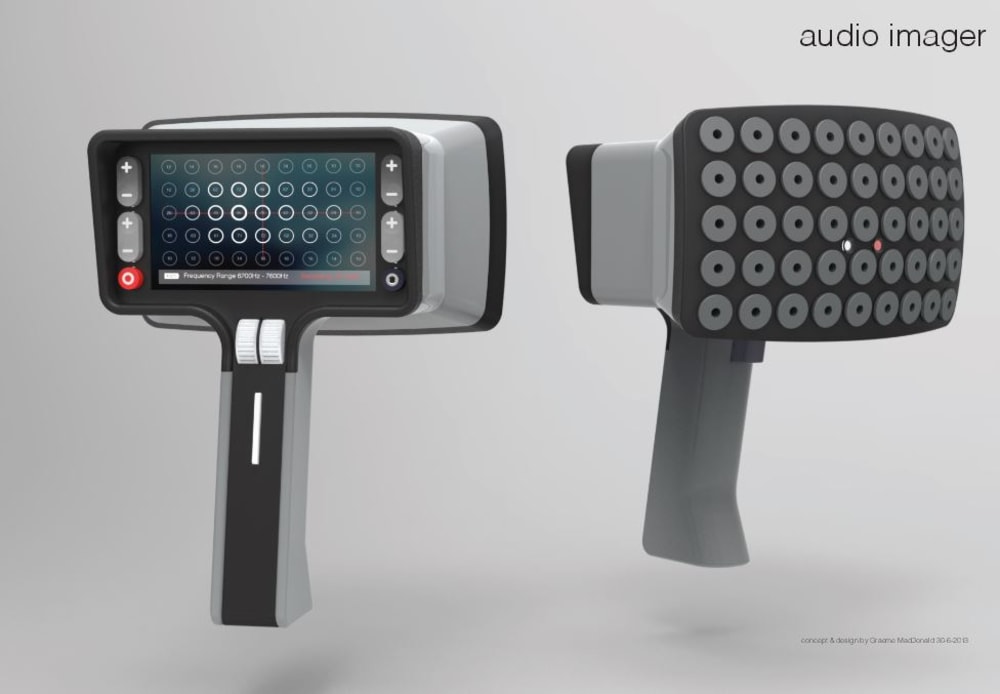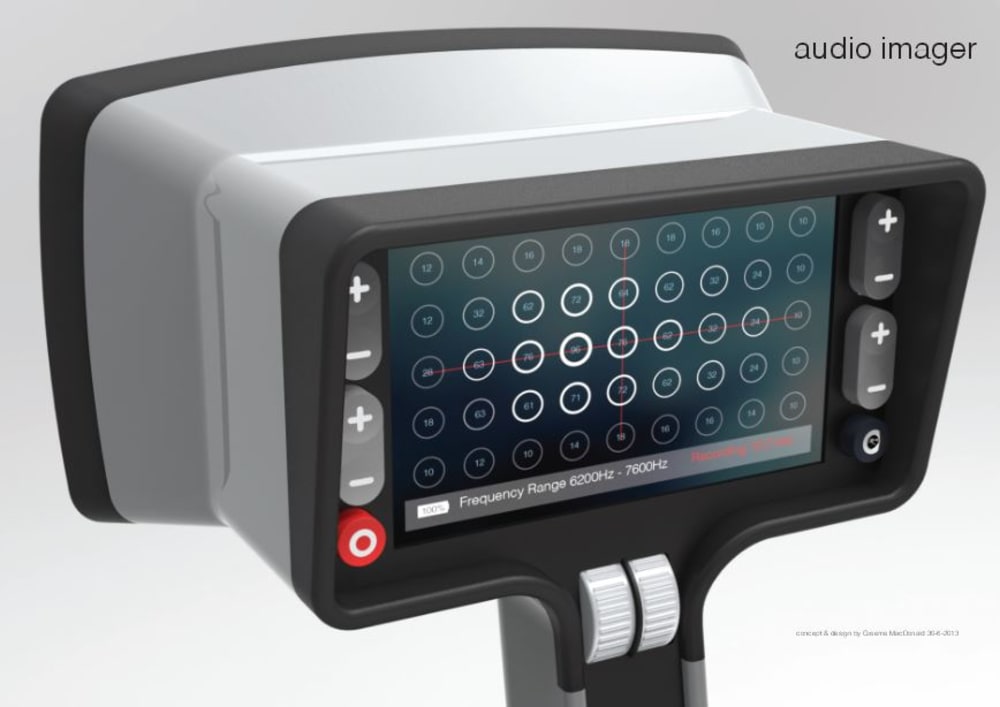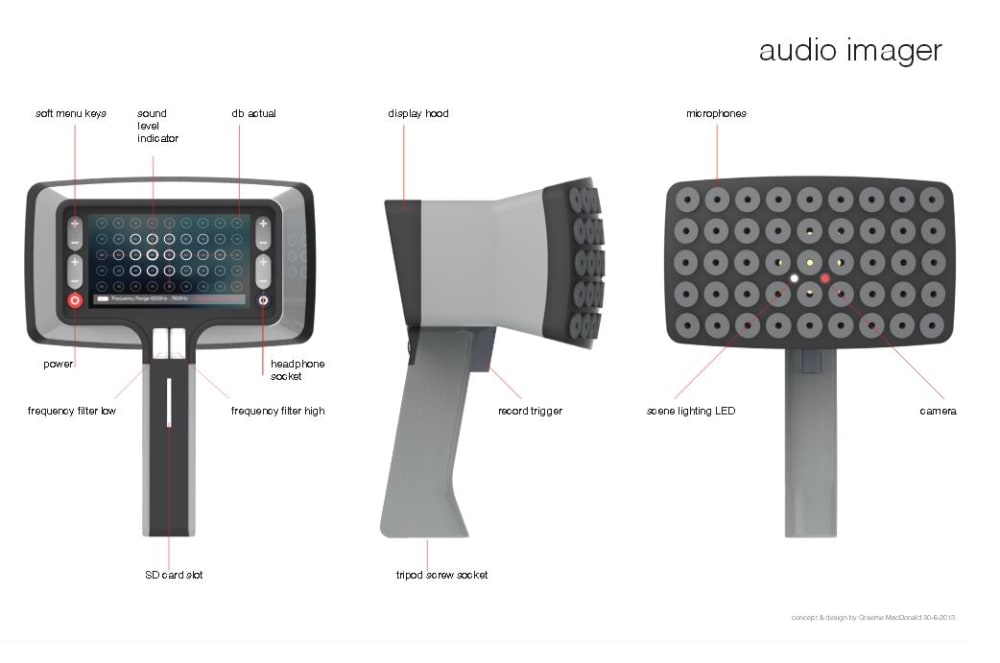

Q What problem does the design idea solve?
A Locating, measuring and recording the source of sounds
Q What are the potential benefits?
A The device allows the user to create a visual map of ‘soundscapes’. It also aids in tracing the source of sounds in environments where is is difficult to do so by listening or using conventional sound level meters.
Q How is the idea novel or an improvement on what is currently available in the marketplace?
A Currently available equipment can only measure a single point of sound. This device generates an overall image of sound pressure levels falling within its ‘angle of hearing’
Q Where would this idea be applied?
A - Machinery maintenance, repair and diagnosis
- Building design for sound reduction
- Analysis of auditorium acoustics
- Noise reduction on worksites and factories
- Analysis of environmental noise around motorways and airports
- Security and military surveillance
Q What is the market potential?
A The potential is 100,000s of sales to engineers, researchers and technicians
Q How does the design work?
A The device operates in a similar way to a thermal imaging camera except that instead of imaging heat it images sound.
The device is handheld, it is pointed in the general direction that the sound is coming from. A 9x5 array of miniature directional microphones detect the sound at various angles off the central axis. The microphone that is pointed most directly at the sound source generates the strongest signal. The signal from each microphone is separately processed and mapped on the display at the rear of the device. Loud signals generate a bright spot on the screen and quite signals generate a less bright spot. The actual db level is also displayed for each mic.
A camera located close to the middle microphone allows an image of the area being mapped to be superimposed on the audio image.
There are frequency filters that allow the sound being traced to be isolated to reduce stray noise.
By comparing the time of arrival of sound to each microphone the device can determine which sound is the source and which sounds are echoes. The echoes can be filtered out.
A headphone jack allows listening to the sound being processed from the centre microphone making it easier to set the frequency filters.
The device can record to an SD card showing the audio image data alone, or including the video image as stills or movies.
The device can be set to automatically start recording when a sound above a set threshold is received. It can be mounted on a tripod and left to work unattended.
Q How would the product be manufactured?
A The product can be made using standard electronic components and a specially designed injection moulded housing.
Q How would the production cost compare with products already in the marketplace?
A The production cost would be similar to the cost of handheld thermal imaging equipment.
-
Awards
-
 2013 Machinery & Equipment Honorable Mention
2013 Machinery & Equipment Honorable Mention -
 2013 Top 100 Entries
2013 Top 100 Entries
Like this entry?
-
About the Entrant
- Name:Graeme Macdonald
- Type of entry:individual
- Software used for this entry:Ashlar Vellum Cobalt / Keyshot
- Patent status:none








